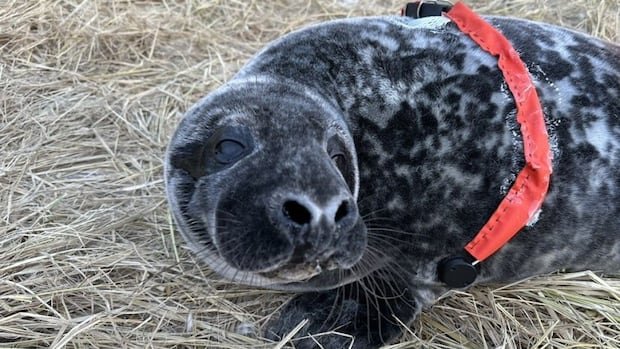Researchers are investigating how grey seal pups on Sable Island develop the skills to survive their first year. The odds are stacked against these adorable creatures as up to 400,000 grey seals congregate on the small sandbar located approximately 300 kilometers southeast of Halifax each winter for mating and birthing purposes.
The young pups receive limited parental care, with their mothers nursing them for just two to three weeks before leaving them to fend for themselves without guidance on swimming, diving, or hunting. Marine biologist Michelle Shero from the Woods Hole Oceanographic Institution in Massachusetts marvels at the pups’ ability to adapt to this challenging environment.
Unfortunately, an alarming 90 percent of grey seal pups on Sable Island do not survive their first year, likely attributed to the high population density and fierce competition for scarce food resources. The impact of these factors becomes evident early on as the pups struggle to match the diving and feeding efficiency of adult seals.
Shero initiated a pilot project employing Fitbit-style monitors to monitor the health and development of the seal pups. These monitors track the pups’ heart rates, heart rate intervals, and provide EKG readings, along with an accelerometer to monitor their movements at rest and during activity. The aim is to understand how the pups utilize their energy, adapt post-weaning, and prepare for ocean life.
The project initially focused on monitoring six pups under one month old before they started swimming. Once the pups transition to water, they need to learn essential skills such as breath-holding, efficient oxygen usage, and slowing their heart rate for prolonged dives.
To enhance monitoring capabilities, engineer Ben Weiss from the Woods Hole Oceanographic Institution developed a monitor that could withstand the harsh conditions of Sable Island. The heart rate monitors were customized with 3D-printed backpacks and electrode holders to ensure minimal intrusion on the seals. The monitors, attached while the seals are sedated, can last up to nine days, providing valuable data without the need for real-time monitoring.
Shero anticipates expanding the pilot project by equipping more pups and their mothers with monitors in the future. This expansion aims to analyze the maternal investment in pups and assess how efficiently the pups utilize the energy provided. The innovative monitoring technology holds promise for broader applications across various species.

